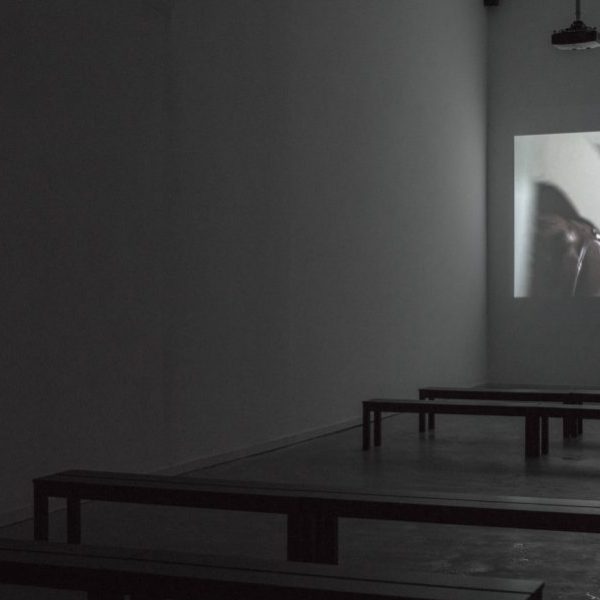Lest We Forget: What You “C” in Our Cookies
Sarah Underwood—
For me, there are two outstanding features of Dillon, South Carolina. One is that savvy out-of-staters like me drive several miles below the speed limit. The other is the South-of-the-Border theme park. Nearly every summer of my life, my family drove from Northern Virginia to Myrtle Beach, South Carolina to visit my grandparents, passing by South-of-the-Border each time. The billboards for the Mexican-themed amusement park start over a hundred miles before its exit and continue even a little ways after it. Because the billboards dominate the landscape for hours, anyone who has driven along I-95 South is familiar with “Pedro.” I know he offers top-notch mini-golfing, fireworks that are probably illegal in my home state, and enviable sombreros. I also know that he serves, for some inexplicable reason, a variety of Asian cuisine. There’s just one thing: whether it’s because my family is taking a stand against the cringe-worthy stereotypes or because my father is the type to try to limit even restroom stops, I’ve never been to South of the Border.
 Advertisers can dive-bomb their audience with colorful, Spanglish-laden messages, but if we just aren’t interested, then we just aren’t interested. For South of the Border’s billboard designers, my family would probably fall into the “waste” category Joseph Turow describes in The Daily You: How the New Advertising Industry is Defining Your Identity and Your Worth. In past decades, media-buyers accepted “waste” as unavoidable, without needing to categorize such consumers. When they created television commercials or magazine ads, they knew that many people who saw their advertising would not resemble their typical customers. Traditional advertising was already shifting to more streamlined methods, however, when the internet appeared. Targeted advertising was not “invented” along with the internet, but this new medium did allow marketers to reach very specific consumers, many more than had previously been possible.
Advertisers can dive-bomb their audience with colorful, Spanglish-laden messages, but if we just aren’t interested, then we just aren’t interested. For South of the Border’s billboard designers, my family would probably fall into the “waste” category Joseph Turow describes in The Daily You: How the New Advertising Industry is Defining Your Identity and Your Worth. In past decades, media-buyers accepted “waste” as unavoidable, without needing to categorize such consumers. When they created television commercials or magazine ads, they knew that many people who saw their advertising would not resemble their typical customers. Traditional advertising was already shifting to more streamlined methods, however, when the internet appeared. Targeted advertising was not “invented” along with the internet, but this new medium did allow marketers to reach very specific consumers, many more than had previously been possible.
They find these consumers by methods which Turow acknowledges are often called “creepy” once they are explained to internet users. One of the most common is the cookie of which there are “good” and “bad” types. Good cookies were invented to allow websites to track a visitor’s actions within a single website. For example, before websites could remember a visitor’s actions, the online shopping cart was not possible. The website could not remember more than one item at a time, and all online purchases had to be made one by one. They also allowed the possibility of customized settings for all a website’s visitors. The “creepy” cookies created the ability to track individuals across multiple websites and relate personal information to a person’s online habits.
Turow points out that the gut instinct of internet users—that it is unsettling when multiple advertisers can track personal information and habits—has not been enough to change the current online environment. Yes, something is wrong when media-buyers can determine that a set of supposedly anonymous medical information belongs to one of just three houses in the United States (in order to market health-related products to the households). But when lawmakers argue that cookies and other monitoring devices are “creepy,” it allows companies to complain that people are just misinformed. They can say we just do not understand simple, legal advertising practices that help connect consumers with products they want. Turow’s answer? We need to educate ourselves, now, about the importance of protecting our privacy.
Just for fun, one day recently I looked up websites to shop for 1950s-style, vintage skirts—a fairly specific search, in my opinion, and not something I had ever looked for before. After a few minutes, I ended up on an entirely unrelated site, but at the bottom of the age was an advertisement 1950s-style, vintage skirts. The ad used language oddly similar to how I had phrased my search terms, which Turow predicts will start becoming even more common. I knew that something had monitored my recent actions, but what bugged me the most was that I hadn’t known how to prevent the little digital ad that tempted me more than a hundred miles of Pedro billboards.
Sarah Underwood is a graduate of the College of William and Mary and a former Yale University Press intern. Her column, Lest We Forget, appears on the Yale Press Log.


























This is Sarah’s father and we did stop at South of the Border once, although Sarah was not on that trip. Sorry Sarah. Admittedly, I did not get out of the car.